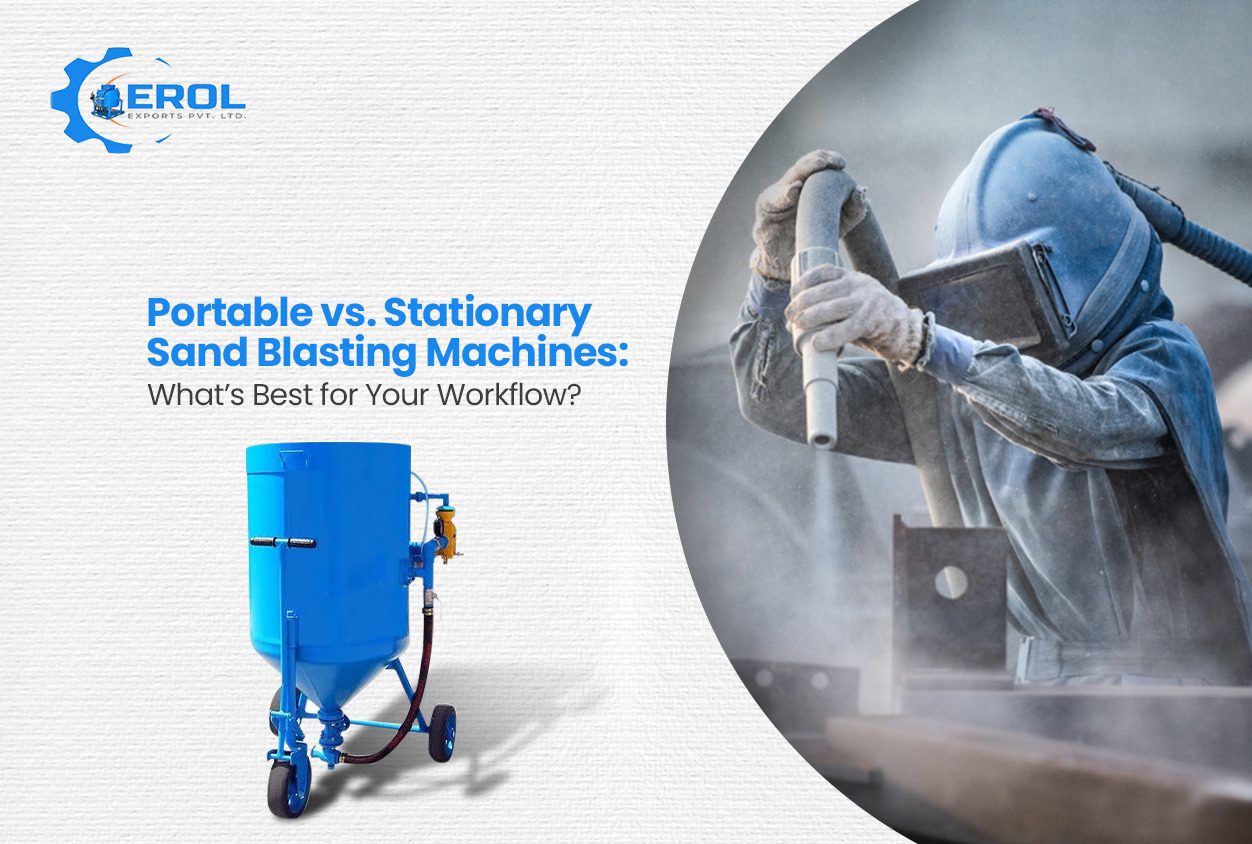
Every industrial surface requires preparation. Whether it is cleaning rusted pipelines, stripping old paint, or preparing a base for coating, sand blasting is often the method of choice. Choosing the right machine is what defines how well the job is done and how smoothly your process runs.
For many, the choice begins with a single question. Should you invest in a portable unit or go for a stationary one? Both types of sand blasting machines have their place in industrial operations. The decision rests on understanding how each one aligns with your day-to-day workflow.
There are jobs that cannot wait for material to reach the machine. Field pipelines, ship hulls, bridges and structural steel all require surface treatment in unpredictable settings. That is why portable blasting units exist. These machines move to the work area. They are compact, efficient and able to operate with minimal infrastructure. If your project locations change often, you need something that does not slow you down.
A portable sand blasting machine in India is typically designed to be easy to transport. The tank size may be smaller, but it gets the job done where it matters. These machines are often used by contractors who work in refineries, power plants or remote industrial zones. They allow blasting to start quickly and finish on schedule. Here are the reasons people choose portable systems:
Most sand blasting machine manufacturers understand that portability is not just about wheels. It is also about fast setup, flexible media usage and ease of handling in demanding spaces.
A stationary sand blasting setup is not meant to move. It is installed in a controlled environment where consistent blasting is expected every day. This could be a factory floor, a component preparation line, or a high-volume workshop. What it lacks in mobility, it makes up for in stability and performance.
Stationary systems are usually larger and more powerful. They are often fitted with dust extraction, media recycling and controlled ventilation. These features matter when surface treatment must meet technical specifications. In aerospace, automotive, rail and heavy equipment industries, this consistency is critical. Reasons to consider a stationary blasting machine:
If your team handles repeated orders or needs a long-term setup with low variability, then a fixed machine gives you the results you expect. It becomes part of the production rhythm.
A blasting machine is not just a product. It is a tool that must support your workflow. Whether you pick a portable or stationary machine, your decision should be based on how you work, where you work and what kind of surface preparation you deal with. Here are some factors to compare:
A blasting equipment manufacturer in India will often provide both types of machines. They may also customise based on tank size, pressure range and nozzle options. That is why discussing your actual workflow before ordering is more important than browsing models.
The rise in demand for cleaner finishes, better paint adhesion and corrosion control has changed how companies think about sand blasting. It is no longer seen as just a pre-treatment step. It is now part of a larger quality assurance process. Whether you are preparing steel beams for a bridge or cleaning castings before inspection, the blast process is expected to perform without failure.
This shift has made both portable and fixed systems more advanced. Portable units now come with better safety valves and media flow control. Fixed units offer automated recovery and programmable cycles. The real choice is not about old versus new. It is about fit and function.
Choosing between portable and stationary sand blasting machines is not about size or location alone. It is about what fits your production rhythm, safety protocols, and job complexity. Both systems have strengths. Both are valuable when used in the right setting.
Erol Exports, a trusted name among blasting equipment manufacturer in India, continues to support industries with reliable, quality-led surface preparation solutions. Their understanding of local needs and practical constraints allows buyers to find the equipment that fits [not just the one that sells].
